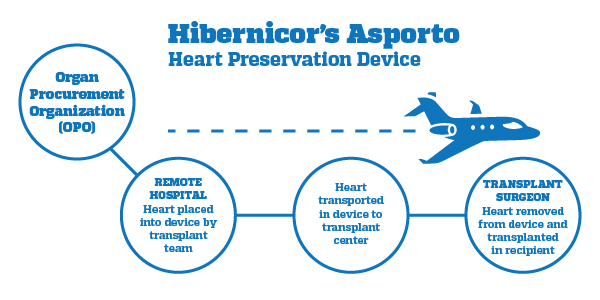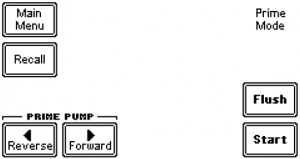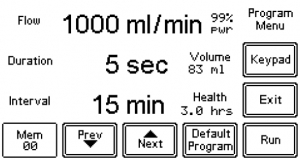The Organ Preservation Solution
Preserving the heart – from harvest to transplantation and beyond
Despite a high demand for donor hearts and a well-established transplant process, 20 percent of donated hearts are not used because organ procurement agencies cannot find a recipient in time.
Asporto, Hibernicor’s heart transplant device, improves and prolongs organ preservation for transplantation of donor hearts.
Current methods preserve donor hearts for 3 hours. In its current prototype, Asporto lengthens preservation of the donor heart up to 6 hours. This extra time for donor organ preservation has the potential to:
- Increase the number of viable donor hearts by 20%.
- Provide time to perform tissue matching, resulting in fewer organ rejections.
- Decrease immediate post-operative morbidity and mortality.
- Shorten pre-transplant waiting list time by 1 month.
- Faster post-operative recovery.
- Reduce medical costs 1 year after transplantation.
- Decrease net operating costs for transplant centers.
- Procure donor hearts in remote areas from an expanded geographic area.

How Asporto works
Roughly the size of a 16-quart portable cooler, Asporto is an electronic medical device which controls the administration of a saline-based fluid to the donor heart during cold (hypothermic) storage.

The heart is placed in a sterile heart container and placed in the Asporto device. A peristaltic pump moves fluid contained in an intravenous bag to the aortic root of the donor heart while keeping the heart cold.
With a touchscreen interface, heart transplant professionals can:
Why Asporto works
In addition to its unique design, Asporto capitalizes on two factors that limit the degradation of donor hearts:
- Temperature – Keeping hearts in a hypothermic state between 5 and 8°C preserves the organ by slowing down the rate of tissue degradation by reducing cellular energy demands and enzymatic activity.
- Perfusion – Cardioplegic (saline) is pumped into the aorta and into coronary arteries moving damaging metabolites (such as lactic acid) out of the capillaries of the heart.
Benefits of Asporto
Improving donor heart viability allows transplant centers to increase net operating margins and decrease peri-operative costs.
Net Operating Margins White Paper Peri-operative Cost White Paper
Description
The Asporto // Heart Preservation Device is a portable, isolated heart perfusion and transport system, designed to support a donated heart and to maintain the organ in a near-normal physiologic state under hypothermic aseptic conditions. An insulated carbon fiber enclosure encloses the heart and perfusate within a disposable perfusion tubing set (purchased separately). The Asporto // Heart Preservation Device includes a peristaltic pump, user interface, thermoelectic cooler, power inputs, and two handles.


